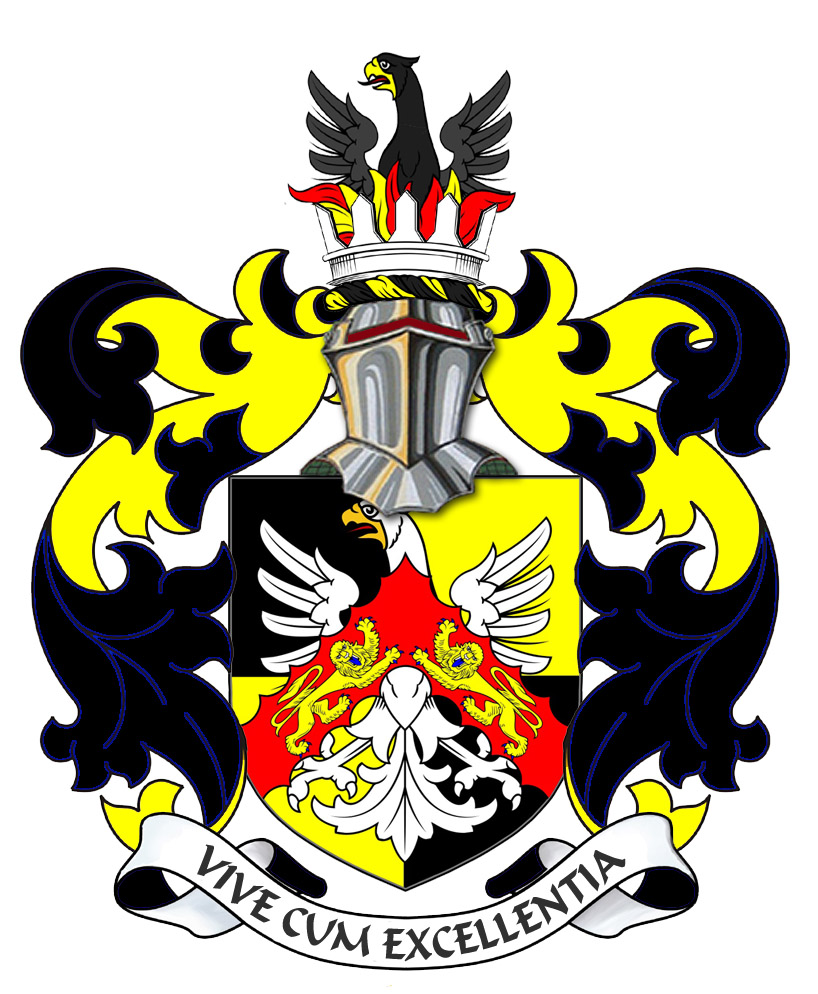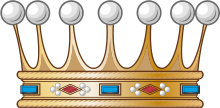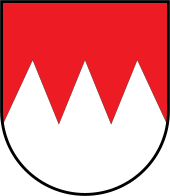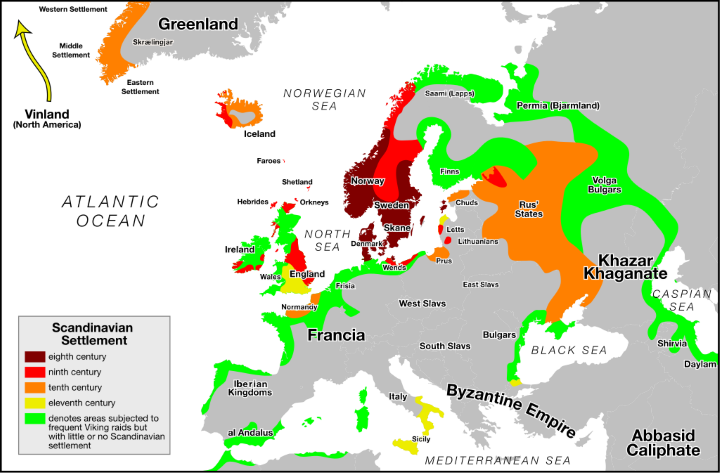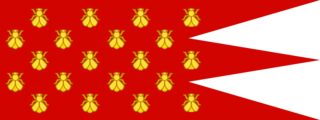


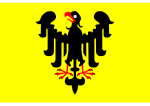
Free Lords - Vicomtes Feudal Barons and Fief Seigneurs - SuzerainIn feudal Europe, a baron was a member of the nobility who held a fief or a piece of land from a higher-ranking lord or monarch. While Fief Lords existed hundreds of years before barons, the fief was typically granted in exchange for the lord's military or political services to the granting authority. A lord who held his fief direct from the crown was considered a High Count or high ranking Lord. Later the fief holder direct from the crown became what is called a "Royal Free Baron" or (Dane/Norse) Friherre or later a "feudal baron". "Reichsfreiherr" (sometimes spelled "Reichsfreiherre") was a title used in the Holy Roman Empire to denote a baron or lord who enjoyed a special status of sovereignty within the Empire. The title was granted to certain members of the nobility who were considered "immediate," meaning that they owed allegiance only to the Emperor himself, rather than to any intermediate lords or authorities. The common Germanic/Norse acronym for "Reichsfreiherr" is "R.Frhr." or "RFrhr." for short. The role of a "feudal baron" was multifaceted. On the one hand, they were responsible for maintaining their fief and ensuring its productivity, as well as defending it from external threats. On the other hand, they were also responsible for administering justice within their fief and collecting taxes or other revenues on behalf of their lord. In many cases, feudal barons were also involved in the broader politics of their time, whether through serving in the courts of kings and emperors or participating in regional or national assemblies. They often had significant social and economic power within their fief, and many had their own retinues of knights and other followers. Overall, the position of a feudal baron was an important one in the social and political hierarchy of medieval Europe, and their activities and influence played a key role in shaping the course of history during this period. Historically, The Fief de Thomas Blondel has territory that existed in both of the large Fiefs of Bessin and Cotentin. As per the 1440 Deed of Fief Blondel, the Fief has existed in both St. Pierre Du Bois Parish and Torteval parish for well over 700 years. The original owners of Fief Blondel land and title were called Vicomtes or Viceomes. The Fiefs existed all the way back to Danish or Viking Territorial Rule of the region. Almost 1000 years later, the Guernsey Fiefs today are still held directly from the Crown by virtue of registration of fiefs direct with the royal courts and the King. In 1270, on the death of Sir Henry Le Canelly, the great Guernsey fief Fief Au Canelly was divided between his daughters. Guilemette, the wife of Henry de Saint Martin obtained a considerable part of the island originating the Fiefs or Lords of Janin Besnard, Jean du Gaillard, Guillot Justice and Fief de Thomas Blondel. SEE DIGITAL FIEF MAP The word viscount comes from Old French visconte (Modern French : vicomte ), itself from Medieval Latin vicecomitem , accusative of vicecomes , from Late Latin vice- "deputy" + Latin comes (originally "companion"; later Roman imperial courtier or trusted appointee, ultimately count). [4]
In 1020, Duke Richard II divides Guernsey diagonally from two halves, granting from south-east to Néel,
Viscount of Cotentin and west to Anchetel, Vicomte du Bessin.
"Vicomte" (or "vicomte" in French) is a noble title used in
France and other European countries, equivalent to the English title of viscount. It is a rank of nobility that
falls between a baron and a count.
The vicomte was originally an official in charge of a vicomté, a
territorial division of land, but over time the title became associated with the hereditary rank of nobility. In
France, the title was first introduced in the 11th century, and it continued to be used until the French Revolution
of the late 18th century.
Like other titles of nobility, the precise status and privileges
of a vicomte varied depending on the specific context and the country in which it was used. In general, however, a
vicomte was a member of the aristocracy with certain social, political, and economic privileges, such as the right
to attend the royal court, participate in the government of the country, and collect taxes or other revenues from
their lands.
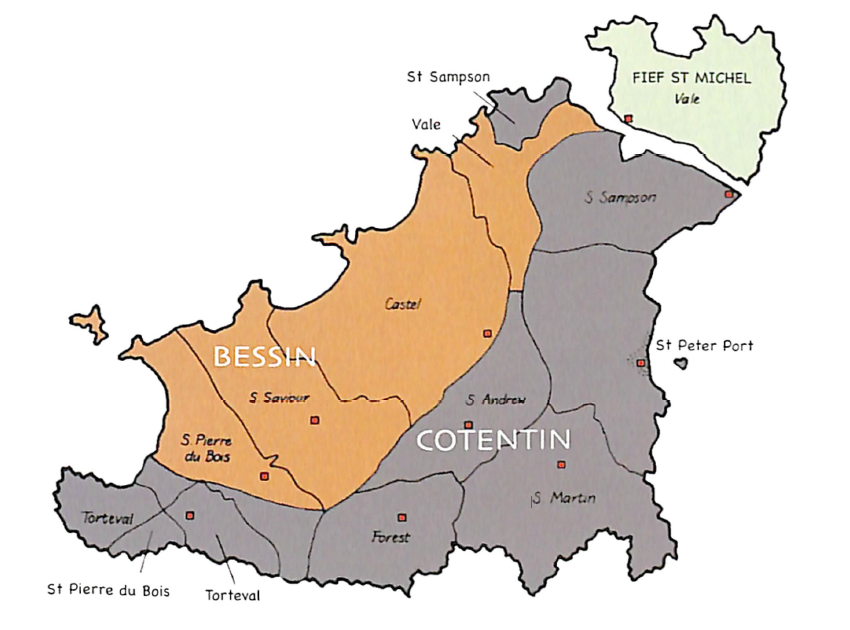
In 12th Century Kingdom of France, the term baronnie or Baron was generally applied to all lords or seigneurs possessing an important fief, but later in the 13th century the title of Baron meant that the holder held his Fief directly from the Crown and was thus more important than a count since counts were typically vassals. The holder of an allodial (i.e., suzerain-free) barony was thus called a Free Lord, or Freihere or Baron. The term baron was not used or created until 1387 by Richard II when he created Baron of Kidderminster and in 1433, the second baron was created "Baron Fanhope".
A 1440 Record of the Fiefdom Deed of the Fief of Thomas Blondel which the deed is still at University Leeds, shows the parishes of St Peter of the Wood and Torteval, Guernsey, made by Janet Blondel to Thomas de la Court. attested by Jean Bonamy and Jacques Guille, jurats. According to the Deed, the Fief Blondel further includes the: Fief Blondel territory in the parishes of St Pierre du Bois (St. Peter of the Wood) and of Notre Dame de Torteval along with the Fief de l'Eperon of Torteval, the Bouvée Phlipot Pain, lying in the said parish of St Pierre duBois, and the Bouvée Torquetil and Bouvée Bourgeon lying in the said parish of Torteval. 1848 - French Nobility and Titles are eliminated while the Noble Fief Seigneur Titles of Norman Guernsey continue to exist under Ancient British Feudal Norman Laws. 1919 - Nobility eliminated in Germany and Austria. Since 1919 nobility is no longer legally recognized in Germany. Under the Law on the Abolition of Nobility, Austria eliminated its noble classes in 1919. However in Guernsey, the ancient property titles of Fief Seigneur or Free Lord of a Fief continued to exist. A few of the Ancient Guernsey fiefs are still registered directly with the Crown where a feudal fee of treizième or conge was paid in Royal Court directly to Her Majesty. A lawyer must be hired to register the fief in French even today. Fief Blondel Historically had Chefs de Bouvee who were in charge of managing tenants within the bouvée. Jean Le Huray was a Chef of the Bouvée de Torquetil in the year 1648, a dependancy of the Fief Thomas Blondel which indicates that Fief Blondel has an ancient history as a Royal Fief. FranceIn 12th-century France the term baron, in a restricted sense, was applied properly to all lords possessing an important fief, but toward the end of the 13th century the title had come to mean that its bearer held his fief direct from the crown and was therefore more important than a count, since many counts were only mediate vassals. Citation: baron | title | Britannica The term baron was not used or created until 1387 by Richard II when he created Baron of Kidderminster and in 1433, the second baron was created "Baron Fanhope". We must now turn from what may be called the political side of feudalism in Guernsey to glance at the tenures of our manors and then at the economical side of feudalism in the island, the relations existing between the lord of the manor, the owner of the soil, and his tenants. What first strikes one is the marvellous vitality of the manorial system. Once a manor always a manor. It matters not whether, as in the case of many of our Guernsey fiefs, that a manor was escheated to the Crown in the days of King John, or at a much later period, it never loses its identity, is never merged into one general royal fief, but preserves through all these centuries its own individuality. It had its own court and administration, and even to this day it is its " douzaine," twelve sworn men, tenants of the manor, who draw up the " extente," or survey, of the holdings of the tenants. There were two classes of fiefs in Guernsey, (1) those held by military service, grand serjeantry or little serjeantry, what are styled in France " fiefs hauberts," and " fiefs nobles," and (2) those held by yearly rent or its equivalent, such as a pair of spurs, &c, which may be compared with vavassories. So the feudal baron ruled his estate as chief among his principal tenants, who formed his court and administered justice under his representative, the seneschal. This system is clearly shown in the records of manor courts in England, and by the old " franchises " of our Guernsey Fief du Comte, the earliest copy of which dates from 1406. Here we find the seneschal, or president of the Manor Court, and the greffier, or clerk, appointed by the Lord of the Manor. The eight vavassors, or judges of the court, were the seigneurs of the eight principal frank-fiefs of the manor, who held their land by suit of court. By the sixteenth century only three of these frank-fiefs retained hereditary seigneurs, namely those of Du Groignet, Du Pignon, and De Carteret, the two first held by the Le Marchants, and the latter by a Blondel. These seigneurs served as vavassors either in person or by deputy chosen by themselves, subject to the approval of the Seigneur du Comte. The vavassors of the other five franc- fiefs, De Longues, Des Reveaux, Du Videclin, Des Grantes, and De La Court, were chosen by the lord of the manor, and presented by him to take oath before the Manor Court. They bore the title of seigneurs of the franc-fief they represented whilst acting as vavassors. The next important officer, the prevot or grangier of the manor, whose duties in some measure corresponded with those of the prevot or sheriff of the Royal Court, was curiously chosen by the tenants of the thirty-two vellein bouvees of the manor. Two of these bouvees in turn choosing https://archive.org/stream/reporttransa619091912guer/reporttransa619091912guer_djvu.txt Fiefs information from book. Banners, Seals, Coins and more. Cite Style of
Seigneur
- As per the The Feudal Dues (Guernsey) Law, 1980 Style of Seigneur of a fief etc. Section 4. The foregoing
provisions of this Law shall be without prejudice –
Freiherr or Free Lord in the feudal system of the Danes, Vikings and Germanic WorldThe title of Freiherr or Lensbaron (literally fief baron). derives from the historical situation in which an owner held free (allodial) title to his land, as opposed "unmittelbar" ("unintermediated"), or held without any intermediate feudal tenure; or unlike the ordinary baron, who was originally a knight (Ritter) invassalage to a higher lord or sovereign, and unlike medieval German ministerials, who were bound to provide administrative services for a lord. A Freiherr or Lensbaron sometimes exercised hereditary administrative and judicial prerogatives over those resident in his barony instead of theliege lord, who might be the duke (Herzog) or count (Graf). See: Danish nobility - Wikipedia
Some of the older baronial families began to use Reichsfreiherr in formal contexts to distinguish themselves from the new classes of barons created by monarchs of lesser stature than the Holy Roman Emperors, and this usage is far from obsolete. Reichsfreiherr is a Germanic title of nobility, usually translated as Baron of the Empire and implies an ancient property title direct from the crown.
From the Middle Ages onward, each head of a Swedish noble house was entitled to vote in any provincial council when held, as in the Realm's Herredag, later Riddarhuset. In 1561, King Eric XIV began to grant some noblemen the titles of count (greve) or baron (friherre). The family members of a friherre were entitled to the same title, which in time became Baron or Baronessa colloquially: thus a person who formally is a friherre now might use the title of "Baron" before his name, and he might also be spoken of as "a baron". However, after the change of constitution in 1809, newly created baronships in principle conferred the dignity only in primogeniture.[11] In the now valid Swedish Instrument of Government (1974), the possibility to create nobility is completely eliminated; and since the beginning of the twenty-first century, noble dignities have passed from the official sphere to the private. In Denmark and Norway, the title of Friherre or Lensbaron was of equal rank to that of Baron, which has gradually replaced it. It was instituted on 25 May 1671 with Christian V's Friherre privileges. Today only a few Danish noble families use the title of Friherreand most of those are based in Sweden, where that version of the title is still more commonly used; a DanishFriherregenerally is addressed as "Baron".[12] The wife of a Danish or Norwegian Friherreis titled Friherreinde, and the daughters are formally addressed as Baronesse.[10] With the first freeConstitution of Denmarkof 1849 came a complete abolition of the privileges of the nobility. Today titles are only of ceremonial interest in the circles around the Monarchy of Denmark[13]
Tenants In Chief
Citation: Hull Domesday Project - tenant-in-chief (domesdaybook.net) Tenant-in chief is a modern coinage which, 'like many other supposedly technical terms of feudalism , seems to be a creation of medievalists rather than of the middle ages' (Reynolds, Fiefs , page 324).
By convention, tenants-in-chief are those landowners who held their lands directly from the Crown after the Conquest. In Domesday Book they are individually listed at the beginning of each county , where they are each assigned a separate section, or chapter, conventionally known as their fief . The totality of their county fiefs are conventionally called Honours . Whether, at this stage, tenancies-in-chief owed defined quotas of military service to the Crown is unclear; Domesday Book is unforthcoming on the subject. The minor landowners who held directly from the Crown were normally grouped together in a collective fief at the end of the text for each county, though Domesday Book is not entirely consistent in its classification of major and minor tenants-in chief. At a later date most of these lesser tenants-in-chief would be known as sergeants . On fiefs and feudalism, see Susan Reynolds, Fiefs and vassals: the medieval evidence reinterpreted (1994); and on military quotas, see J.H. Round, Feudal England (1895); and John Gillingham, 'The introduction of knight service into England', Anglo-Norman Studies, vol. 4 (1982), pages 53-64; 181-87. See also baron , codes for landowners, subinfeudation , and tenure .
Guernsey Fief Seigneurs have been Directly Recognized by Various Nations The Fief Seigneurs of Guernsey are extremely Unique in that the Fief Seigneurs or Lord Barons were recognized formaly by several nations. The fiefs were recognized by Normandy, then by France, Then by England, Then by the Kings/Queens/Emperors of the English Empires, Then by the United Kingdom, and even recognized direclty they the German Occupying Forces. The Guernsey Fiefs were generally recognized as territorial domains granted directly by the Emperor, King or Crown. As the fiefs are not part of UK, England, Vatican, or the EU or France, the fiefs have their own sovereign recognition and status in a royal domain. In the same way, in the German Holy Roman Empires, the fiefs recognized direct from the crown were caled RFRHR or Reichsfreiherren. The German equivalent of baron, Freiherr, or “free lord” of the empire, originally implied a dynastic status, and many Freiherren held countships without taking the title of count (Graf). When the more important of them styled themselves counts, the Freiherren sank into an inferior class of nobility. Even today, the fief Seigneur and island of Sark has its own tax jurisdiction, parliament and laws.
Another significant change to the local political and economic landscape following 1204 was the composition of the seigneurial elite of the Islands. Members of the nobility with cross-Channel interests were forced to choose between allegiance to the kings of England or France. 41 The majority of landholders in the Islands, many of whom were absentees and whose Norman lands were larger and more profitable, unsurprisingly chose to side with the king of France, and their lands in the Islands were subsequently confiscated. The impact of these confiscations in the Islands, known in England as the terra Normannorum (the land of the Normans), a term not entirely apposite to the Channel Islands where the elite were primarily ethnically and culturally Norman, has been discussed in-depth elsewhere. 42 For this discussion, it is notable that the majority of the confiscated lands remained in the king's hand, in some cases indefinitely, which ensured that that there was no one dominant lord in the Islands, other than the king himself. The remainder of confiscated lands and associated rights were cautiously handed to loyal members of the remaining local elite, such as the de Carteret family, or generously to Henry's household knights, most notably William de Cheny and Drew de Barentin, whose families were to have a lasting impact on the Islands in the thirteenth and fourteenth centuries. 43 These men owed their position entirely to the kings of England, thus ensuring their loyalty and entwining their own interests with those of the king. CITATION ‘The King's Other Islands of the Sea’: The Channel Islands in the Plantagenet Realm, 1254–1341 - Kelleher - 2022 - History - Wiley Online Library
The inclusion of the Channel Islands in the 1254 grant was the most significant development in the Islands’ constitutional status following the loss of Normandy. The Islands were now asserted to be an inalienable possession of the English crown and the Islanders were viewed unquestionably as subjects of the kings of England. Up until this point, the Channel Islands had possessed no constitutional link with the kings of England other than indirectly via the ducal title of Normandy. The effect of the 1254 grant could be viewed as an ‘annexation’ by which the kings of England became the Islands’ legitimate rulers. 66 There was a basis to view the recapturing of the Islands in 1205–6 and again in 1216–17 as a conquest by the kings of England, which may have enabled them to treat the Islands as a conquered rather than inherited territory. However, this point was not taken nor was there any attempt in this period to incorporate the Islands into the kingdom of England itself. 67 In fact, to have done so would have challenged John's and Henry III's own earlier confirmations to the Islands of the preservation of their laws and customs. The position of the Islands as distinct from the kingdom of England is underscored in the existence of the title dominus insularum (the lord of the isles), a prerogative typically reserved to the kings of England or their heirs but which was rarely employed by its holders on account of its subordinate importance. 68
The newly installed elite in the Islands, such as the de Chenys and de Barentins, possessed vested interests in England and the wider realm, and were active in the king's service. in 1277, the Islands were granted for life and without fee to Edward I's closest friend, Otto de Grandison, a Savoyard knight and Lord of Grandson, a ‘man of European importance’ as a crusader and diplomat. 91 Otto's lordship of the Islands was effectively a sinecure, ‘granted on account of his intimacy with the king, and his long and faithful service from an early age’. 92 The terms of his grant, though somewhat laconic, effectively constituted a non-alienable personal right freely to enjoy the fruits and profits of the royal demesne in the Islands, a significant concession by the king, which he enjoyed for just over half a century. 93 Otto's lordship, in the course of time, came to be deeply opposed by the Islanders as fundamentally it removed them from their direct relationship to the kings of England for the duration of his lordship. Of course, it would have been impossible for Edward to have predicted that Otto would live to the exceptional age of around ninety, and that the Islands would not escheat to Edward's grandson, Edward III, until 1328, thus resulting in the longest period the Islands had been out of the direct hands of the kings of England. When Otto died in 1328, the king of England took immediate re-possession of the Islands. 100 In 1378, the minority council of Richard II (r.1377–99) issued a royal charter to the Channel Islands which confirmed the Islanders’ ancient customs and privileges in acknowledgement for the ‘great danger to their bodies as well as costs to their property they have borne for the safety of the said Islands’. 135
Friherre and Reichsfreiherr Meaning Reichsfreiherr was one of several titles of nobility used in the Holy Roman Empire, which was a complex political entity comprising a loose federation of states, territories, and principalities. The title was granted to certain members of the nobility who were considered "immediate," meaning that they owed allegiance only to the Emperor himself, rather than to any intermediate lords or authorities. The precise status and privileges of a Reichsfreiherr varied depending on the individual circumstances of their holdings and their relationship to the Emperor, but in general, they enjoyed greater autonomy and independence than other members of the nobility. The title "Freiherr" (meaning "free lord" or "baron") was eventually a lower rank of nobility than "Graf" (count), but Reichsfreiherr was a higher status that conferred greater power and prestige. The use of the title declined after the Holy Roman Empire was dissolved in 1806, but it continues to be used in some contexts as a historical title of nobility.
Direct from the Crown In medieval Europe, a fief was a piece of land that was granted to a person in exchange for their loyalty and service to a lord or monarch. A feudal barony was a specific type of fief that was granted to a person who held a high-ranking position in the feudal hierarchy, such as a baron. While the terms "fief" and "feudal barony" are often used interchangeably, there are some differences between the two.
|
Kingdom of West Francia Lord Paramount Feudal Barons The Seigneur Charter of Liberties Viking Kingdom Extended Continental Shelf Fief Worship Fiefs of the Islands Fief de l'Eperon Order of the Iron Crown Blondel Privy Seal Fief DuQuemin Bouvée Phlipot Pain Bouvée Torquetil Bouvée Bourgeon Channel Island History Feif Court Styles and Dignities Fief Blondel Islands Court of Chief Pleas Seigneurs and Dames Travel Research Order of the Genet Order of the Genet Order of the Star Est. 1022 Order of the White Falcon Territorial Waters Order of Celestines Knights of theThistle of Bourbon A Funny Think Happened On the Way to the Fief Arms Motto Flower Chancellor Hereditements Guernsey Bailiwick of Guernsey - Crown Dependency Papal Bull Norse Normandy Fief Rights Blondel and King Richard Press Carnival Store Portelet Beach Roquaine Bay Neustrasia Columbier Dovecote Fief Blondel Merchandise Fief Blondel Beaches Islands Foreshore Events Fiefs For Sale Sold Fief Coin Viscounts de Contentin Fief Blondel Map Feudal Guernsey Titles The Feudal System Flag & Arms Fief Videos Guernsey Castle Advowson Site Map Disclaimer Livres de perchage Lord Baron Longford Dictionary
Feudal Lord of the Fief Blondel of the Nordic Channel Islands Guernsey Est.
1179
Feudalherr - Fief Blondel von der Nordischen Insel Guernsey Est. 1179
New York Gazette - Magazine of Wall Street -
George Mentz -
George Mentz - Aspen Commission
Counselor George Mentz Esq. - Seigneur Feif BlondelBaron Annaly Baron Moyashel Grants to Delvin About Longford Styles and Dignities The Seigneur Court Barons Fiefs of the Islands Longford Map The Island Lords Market & Fair Fief Worship Channel Island History Fief Blondel Lord Baron Longford Fief Rights Fief Blondel Merchandise Events Blondel and King Richard Fief Coin Feudal Guernsey Titles The Feudal System Flag & Arms Castle Site Map Disclaimer Blondel Myth DictionaryKingdom West Francia Kingdom of the FranksMentz Scholarship Program 101 Million Donation - Order of the Genet Knighthood |
